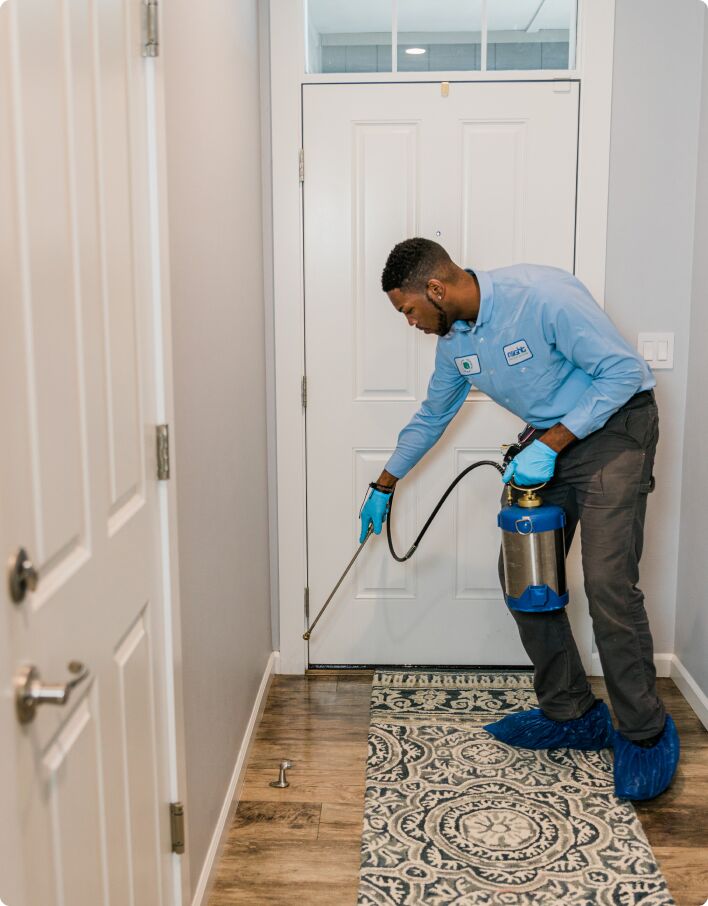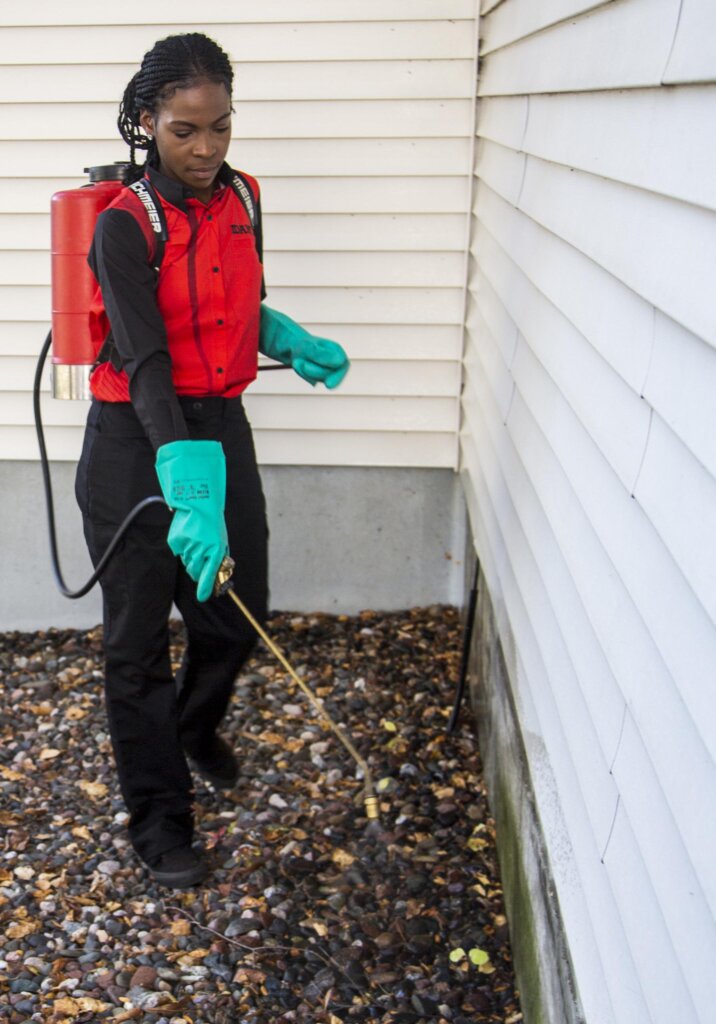Discovering Problem and Treatment Approaches worldwide of Insect Control
The landscape of parasite control encompasses a myriad of difficulties, particularly as invasions of usual household insects continue to progress. By incorporating preventative measures with advanced management methods, such as Integrated Bug Monitoring (IPM), homeowners can better protect their atmospheres.

Usual Household Pests
When it comes to managing our living areas, comprehending typical family bugs is important. These pests not just disrupt our comfort yet can also pose health dangers and damage residential property. The most common household parasites consist of ants, roaches, rodents, termites, and bed bugs.
Ants, typically seen foraging in kitchen areas, can infect food and develop huge swarms. Roaches, understood for their durability, can cause allergic reactions and spread virus. Rats, consisting of computer mice and rats, can trigger architectural damage and carry illness like hantavirus and salmonella. Termites, typically described as "quiet destroyers," can compromise the integrity of wood frameworks, causing expensive fixings. Bed insects, although not disease carriers, can trigger substantial discomfort via their attacks and bring about psychological distress.
Acknowledging the indicators of these insects, such as droppings, nests, or bite marks, is essential for very early treatment (Pest Control Lockhart). Appropriate cleanliness methods, sealing entry points, and keeping a clutter-free setting work preventative measures. By determining these usual household insects and comprehending their actions, property owners can take aggressive steps to reduce invasions, making sure a much healthier living atmosphere
Understanding Parasite Infestations
Insect problems can rise rapidly, transforming a small nuisance into a significant trouble if not resolved without delay. Common variables contributing to problems include poor cleanliness, architectural vulnerabilities, and seasonal changes that drive parasites indoors.
Recognizing the kind of bug is crucial, as different species display diverse actions and reproductive prices. As an example, rats might develop nests in hidden areas while bugs like cockroaches flourish in moist settings. Early discovery usually rests on recognizing signs such as droppings, munch marks, or uncommon sounds, which can indicate a trouble prior to it becomes extreme.
Cozy, moist climates can promote the fast growth of insect populaces, while modifications in landscape design or building can unintentionally create helpful atmospheres. An enlightened approach to comprehending these characteristics lays the groundwork for reliable parasite management approaches in the future.
Therapy Methods and Techniques
Efficient treatment methods and techniques are necessary for alleviating pest infestations and recovering a safe setting. A diverse method is typically best, integrating chemical, organic, and mechanical approaches customized to the certain bug and the intensity of the infestation.
Chemical therapies consist of using pesticides and herbicides, which can effectively remove bugs. Nevertheless, proper application and adherence to safety standards are important to decrease dangers to people and non-target microorganisms. Integrated click this link Pest Administration (IPM) urges the wise use of chemicals as a last hotel, counting instead on tracking and threshold degrees to determine intervention requirements.
Organic control methods include introducing all-natural killers or parasites to decrease navigate to these guys insect populaces. This method is progressively popular, particularly in agricultural settings, as it promotes ecological sustainability.
Mechanical methods, such as traps and barriers, give immediate alleviation from insects without presenting chemicals. Choices include sticky catches for bugs or physical obstacles for rodents.
Ultimately, the option of treatment method ought to think about the specific pest, the setting, and possible influence on human health and ecological communities. A balanced mix of these techniques can efficiently take care of infestations while promoting long-lasting parasite control options.
Preventative Actions for Residence
Proactively attending to insect problems prior to they escalate is crucial for maintaining a healthy home environment (Pest Control Lockhart). Applying effective safety nets can considerably minimize the chance of infestations, ultimately protecting both your building and health

Correct landscape design also plays a critical role in avoidance. Keeping bushes and trees cut away from your house minimizes the chances of insects locating their means indoors. In addition, make certain that drainage systems are operating efficiently to avoid standing water, which can pull in mosquitoes and other insects.
Last but not least, regular examinations are a good idea. On a regular basis looking for signs of bug task enables for very early treatment. By embracing these precautionary measures, homeowners can produce an environment that is much less friendly to pests, consequently enhancing their general top quality of life and reducing the need for substantial bug control interventions.
Business Insect Control Approaches
A detailed approach to industrial pest control is crucial for companies intending to maintain a secure and sanitary setting. Effective approaches involve a mix of normal evaluations, staff member training, and the implementation of Integrated Bug Management (IPM) methods.
Normal evaluations make it possible for early detection of bug task, permitting prompt treatment. Businesses ought to create a regular timetable for these assessments, concentrating on risky locations such as kitchens, storeroom, and garbage disposal websites. Staff member training is equally important; team needs to be educated on the signs of insect invasions and the relevance of reporting them immediately.
Executing IPM methods assists mitigate parasite issues sustainably. This includes habitat modification, such as sealing entry points and decreasing clutter, in addition to utilizing all-natural deterrents prior to resorting to chemical treatments.

Additionally, collaborating with an accredited insect control copyright ensures accessibility to specialist expertise and innovative therapy choices. This collaboration can cause personalized insect control plans tailored to the details needs of the business, minimizing risks and boosting general effectiveness. Ultimately, a proactive and enlightened strategy promotes a pest-free atmosphere, safeguarding both public health and organization online reputation.
Final Thought
In verdict, effective bug control necessitates a detailed understanding of usual household bugs and their actions, coupled with targeted treatment approaches. Executing precautionary measures alongside therapy approaches such as Integrated Pest Administration and organic control enhances the ability to alleviate problems.